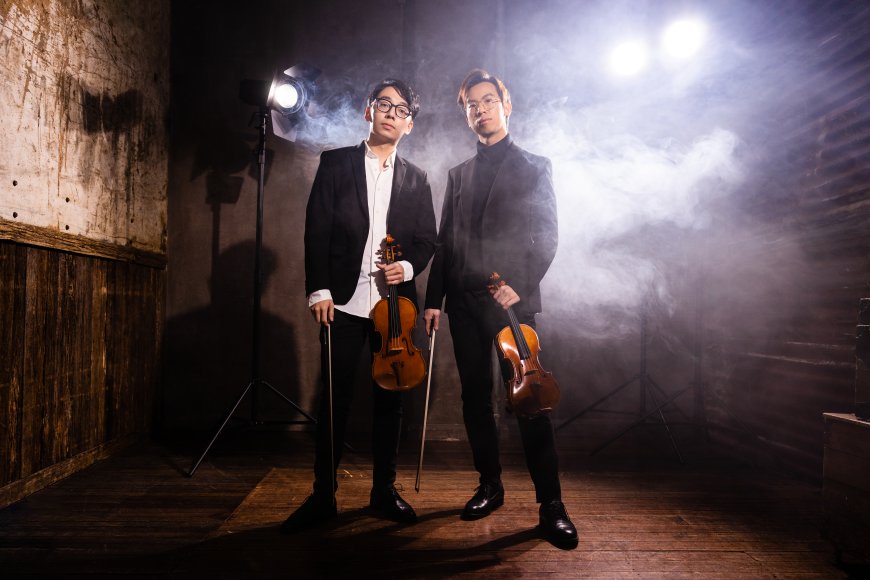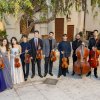
When the pandemic shutdown caused live-performance arts organizations to pivot to online programming, a pair of Australian classical violinists were already a sensation in that space.
TwoSet Violin (Eddy Chen and Brett Yang), serious musicians with experience playing in symphony orchestras, created a light-hearted YouTube podcast in 2013 around classical music, explaining its lore, music, and instrumental techniques using comedy and sometimes absurd contests (Violinist Hilary Hahn plays while hula hooping, for example.)
Bypassing concert tickets and halls, they built a devoted fanbase that now travels to see them live on the symphony hall stage — the duo has amassed 4.35 million subscribers on YouTube. Say what you will about social media, but the opportunity for fans to engage with artists online first creates an interesting ecosystem where likes and comments drive content, and the artists directly introduce composers and music to new viewers.
Recently, I interviewed concertgoers headed to Davies Symphony Hall as TwoSet Violin took up their bows with special guest Sophie Druml on piano, kicking off their “Sacrilegious Games” world tour in San Francisco. Enthusiasm rippled through a decidedly younger crowd: there were tween best friends, kids with their moms, siblings, all elated to see two of their online heroes perform live. A father acknowledged his delight at his kids’ introduction to classical music.
TwoSet has proven that humor and classical music make interesting bedfellows. What about their incorporation of social media into a live classical music performance?
TwoSet pointed a camera tripod toward the audience, which materialized onto the big screen behind them — it appeared to be live on YouTube. Later, an Instagram post used one of these audience moments. At the time, I thought it felt so meta, and wondered, “For kids so used to watching TwoSet online, will they be activated to try to tune in on their phone screens to watch what was happening live online, because that feels more normal?”
At that point, I began watching the concert as someone who works in digital marketing by day, with over a decade in the field. The possibilities — and questions — began shaping my experience of the performance.
At one point, Eddy received a mysterious text, illuminated on the big screen, that read like a phishing scheme, promising eternal likes and engagement. It ends “Do you have what it takes to be a viral star?” He and Brett entreated the audience for advice. I wondered if this kind of call-and-response came from an unspoken contract in online content — the people speak through likes, comments, and shares that then colors what new content will be devised.

Cue the spectacle. A game master put forth a gauntlet of tests TwoSet needed to win to be crowned victor of the evening. The duo hula-hooped while playing Paganini’s Caprice No. 24. During one challenge, Eddy tried to bounce a ping pong ball in sync to Brett’s violin playing. Concerto Karaoke invited audience participation as a list of songs popped up on the big screen like a Spotify playlist — the audience cheered loudest for Sibelius for Eddy and Saint-Saens for Brett. Another challenge had the duo play the same song through different genres: baroque, jazz, K-pop. One woman I interviewed said she learned a lot about classical music… and TikTok music.
How far is too far? The program ended on the idea that TwoSet winning the gauntlet of musical obstacles could cure the brain rot of attention deficit that has taken over the world, plagued by too much content — that attention spans could be healed by classical music. What a lovely idea. What commenced is an Anti-Brain Rot Concerto backdropped by a video of memes on their YouTube channel. An equally giant “subscribe for more happiness” button materialized onscreen.
Eddy and Brett — both content creators and musicians — understand their audience and aim to go viral. But are antics necessary to bring younger listeners into the music? I wonder how many new followers TwoSet will get on YouTube and Instagram after their concerts and if that was a metric of social capital for their “Sacreligious Games” tour, like merch sales at rock concerts.

For paid endorsements online and monetization on YouTube, the service requires specific numbers of engagements and subscribers. TwoSet’s concert tour is stoking their social media presence in a way that runs counter to artists who build social platforms off of their live performances. I’m intrigued by the implications of connecting who we are online to our live engagement with the arts in real time. Is the gamification of classical music the future? Does classical music need a hook or spectacle to draw in viewers attuned to screens, and does live performance need to include parameters that make content skyrocket on social media?
Regardless, there was something exquisite and wonderful in hearing the names of long dead composers come out of the mouths of teenagers and tweens, eyes sparkling with joy and anticipation of attending a concert in a symphony hall.




